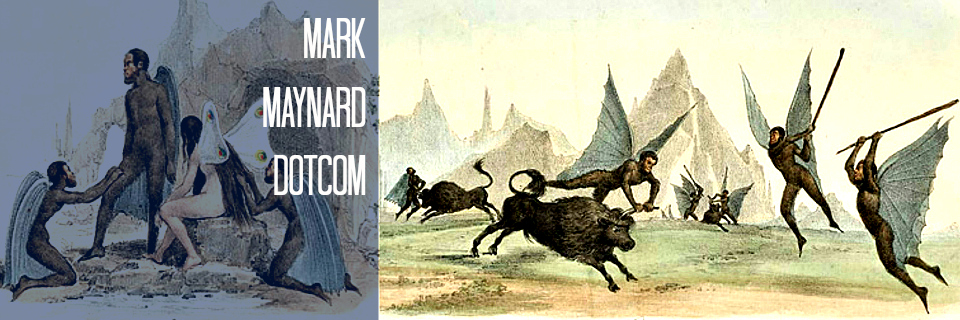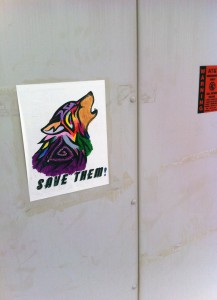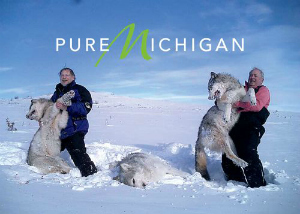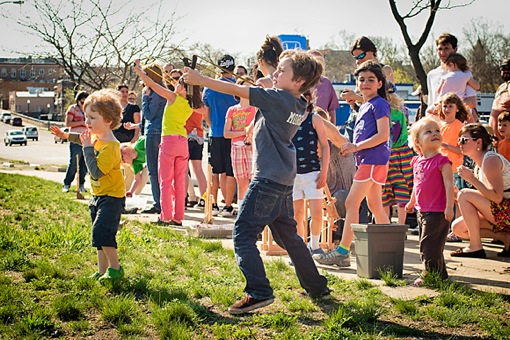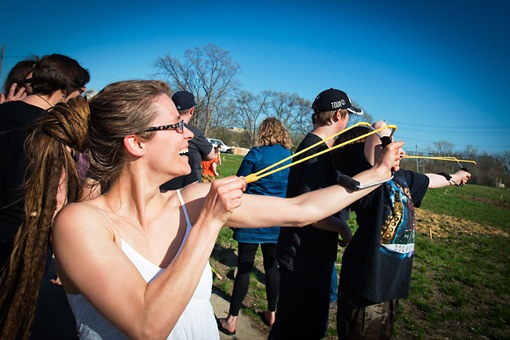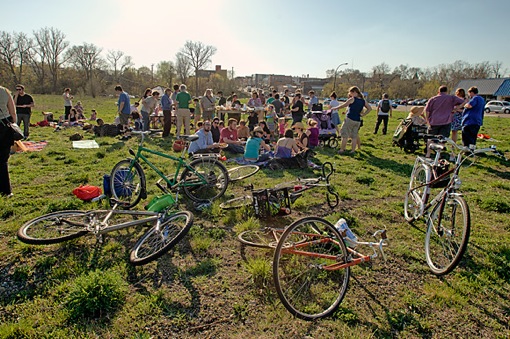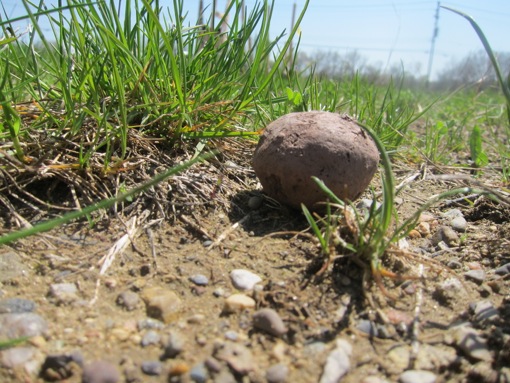Among the people in the audience at Thursday night’s “Doing Business in Ypsilanti” panel, was a woman who has been tasked by Washtenaw County to study the needs of non-venture capital funded entrepreneurs, and make suggestions as to how we might better support them. Her name is Jessica Meissner, and what follows is our email exchange concerning her study, what she’s found thus far, and the possibility that we might see more co-ops in Michigan’s future.
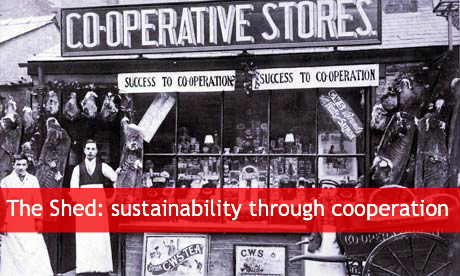
MARK: Before we talk about the research project you’re currently heading up for the County’s Office of Community & Economic Development, perhaps you could tell us a bit about yourself and your research interests.
JESSICA: My life has been a series of rabbit hole adventures into what’s broken in our economic system. My degrees are in economic anthropology, and I moved here after accepting a University of Michigan fellowship to study global corporate structure and practice. I was led to this by a series of events: I grew up in Costa Rica, but my family had to move back to the Midwest when I was seven, when all local currency stopped circulating on the heels of the Latin American Debt Crisis. (The U.S. financial system inflicted the same fate on Latin America in the late 1970s that it did on us in ‘08. You’d think we’d have seen it coming.) I was a mortgage broker at the peak of Colorado’s housing boom. I left that role because I became very uncomfortable with the subprime loan practices. My very next job was as a contract employee for an HP spin-off that manufactured PCA boards at the height of the tech bubble. And, when that bubble burst, I was one of the last ones in the building, helping outsource manufacturing to Malaysia. Not one of my proudest moments. More recently, I’ve spent the last 6 years (with a brief academic hiatus) as a corporate headhunter recruiting for renewable energy startups. I loved my work until the alternative energy space dried up, thanks to our finicky, and bizarre, addiction to fossil fuels. And, over the years (especially since 2008), I’ve watched corporations increasingly treat human beings like commodities – expendable, replaceable and abusable.
I woke up one day at U of M realizing that building a career studying what’s broken wasn’t going to make me a very happy person. I felt I had to start taking action building something more positive. It’s important to say at this point that I have no interest in tearing anything down. The current system has generated a lot of innovation. Plus, what is broken within it seems to be doing a pretty good job of falling apart without my help. I’m dedicated to fostering what I see as our best assets – locally owned small business, entrepreneurship, and our capacity for cooperation and democracy. I believe there are alternatives to the economic development approach of bringing in big business and launching venture capital-funded startups. These companies too often leave the communities that helped build them. I also see a huge opportunity for us to focus on creating jobs that make the most of the skills our community already has. Finally, there are new approaches out there that take the best lessons from successful mainstream business while remaining focused on creating value for our community over maximizing profit at the expense of it.
MARK: Let’s talk about these new approaches… What models are you most interested in exploring? Are we talking primarily about cooperatives?
JESSICA: I’m very interested in a European model called the BEC as a way of helping non-venture capital funded entrepreneurs own their own assets, share resources, and create meaningful employment doing what they love, and are most talented at. The County got excited about it and offered to fund a study of locally owned small business and non-venture capital funded entrepreneurship. We’re also looking at cooperatives as ways for businesses of any stage to raise capital, share resources, and compete more effectively with national chains and big business. Finally, we’re looking at worker-owned and multi-stakeholder cooperatives as a way to finance startups that would employ our under/unemployed workforce, and transform traditionally low-wage work into viable long-term careers. Basically, I believe we can create meaningful employment for a far greater proportion of our community so long as we stay creative and demand new approaches. I’m also interested in the democratic value of co-ops. The multi-stakeholder models we’re looking at would allow the broader community to participate directly in its own economic development decisions.
MARK: Tell me more about the study that you’re doing for the County. How are you rolling it out, and what to do you hope to learn from it?
JESSICA: We’ve completed interviews with local business owners and much of the background data gathering. We recently launched the surveys and are hoping everyone will exercise their voice in the County’s economic development policy in general, as well as the direction of The Shed. Thanks to the generosity of our local businesses, participants also qualify to win gifts from Maker Works, Clay Gallery, United Sonz Printing and Zingerman’s.
There is a ton we can learn from the study. We’ll learn more about the structure of our local business community, what it’s potential is, and how we can all help each other reach our goals. We’re looking for synergies in needs, where there are opportunities for businesses and entrepreneurs to collaborate and share resources. We also ask about existing business support services to learn if people are aware of them, and if they’ve gotten what they needed from them. We’re looking for gaps in the local market, and opportunities to promote more local purchasing. This may help the County design a good local procurement policy, which is another study currently underway. Finally, we’ll learn more about businesses’ capital requirements, which will fit in nicely with another study that is underway, looking at innovative tools to facilitate local investment. There could be other things we’ll learn that we haven’t thought of, which is why we’ve included several optional open-ended questions and comment boxes for the business community to go ahead and just express themselves.
Anyone interested in participating should follow this link.
MARK: And this, ostensibly, will yield some kind of report showing where our local businesses lay on the People’s Food Co-op – Haliburton continuum… how many of them are amenable to sharing resources, distributing equity to employees, etc… and perhaps identifying a few areas where we might be able to invest and see some tangible outcomes, right?
JESSICA: Yes, it will certainly produce a report. But I’m not here to judge business owners in any way (in fact, I think most of them feel they have more than enough people telling them how they should run their businesses). If someone wants to rate our community on a Haliburton-PFC scale, they’ll have to do their own study… Surveys like this are somewhat self-selecting. Entrepreneurs and business owners that are most open to trying innovative approaches, or most interested in collaborating with other businesses, are the ones most likely to take the time to participate.
It’s important to clarify, though, that participating in a co-op doesn’t require a business to become a co-op. In theory, Halliburton and Monsanto could get together and form a lobbying co-op. They probably already have. A better example – the independent small farms that own Organic Valley aren’t themselves co-ops. They jointly own an entity that benefits them, most obviously by giving them access to processing and national markets, but the farms are still small and independently owned. Small, locally-owned businesses can own businesses or assets together, without changing their own ownership structure in any way.
The study’s report will be focused on identifying opportunities for investment and areas where resource sharing would yield the most tangible results and, once launched, be able to sustain themselves without ongoing subsidies. There are definitely triple bottom line advantages to co-op models. They have a great track record for employment stability and for taking care of the community, compared to other for-profit models. But the key reason I’m so interested in co-ops, collaboration and resource sharing is because we need ways to strengthen and support our business community’s sustainably – i.e. without depending on ongoing subsidies, that are drying up quickly. The study isn’t trying to produce a lot of claims like “X% of local businesses are such-and-such.” We’re looking for statements like, “if we can address X need sustainably, it will support at least $X dollars in local revenue, $X dollars in anticipated growth, and X number of jobs.” If the community is going to put energy into projects like these, we need to know where we can get the best return for that effort.
MARK: You reference something called The Shed. What exactly is that?
JESSICA: Right now, it’s a collaboration between myself, the County, and some local business leaders that are interested in promoting cooperative ownership and a generative, living economy. We’re aiming for a facilitation/incubation enterprise that will be cooperatively owned and run by several kinds of stakeholders:
1. Entrepreneurs (of non-venture capital funded enterprises, like food producers, artisans, etc.). They can start as worker-owners receiving a paycheck from the co-op. Once they’ve established their own revenue streams, they can spin off as their own company or stay members running their own product lines.
2. Businesses that want to collaborate. They might want to cooperatively own facilities, share administrative services for their businesses, share distribution, etc. We know that shared food processing facilities is a big need, for instance.
3. Consumers and institutional buyers that purchase goods from these businesses and want to support them.
Given that The Shed will need to establish robust training, facilitation and legal support services for co-op member-owners, we’re realizing that it will also be able to offer incubation and needed support for other local co-ops. I’ve been sad to learn how many organizations have tried to launch co-ops in Michigan and really struggled because of our state’s cumbersome legal code and relative lack of a coherent support infrastructure for cooperatives. Partly because its laws are easier to work with, Wisconsin is like the silicon valley of co-ops. A lot of people around here think cooperatives don’t work and I always tell them to take a look across the lake.
MARK: Where does the name “The Shed” come from? I suspect I’m wrong, but, given the nature of your work, I’m guessing that it has its roots in the idea of a community tool shed – a place where people can pool their resources… Am I close? Or it is just an acronym? Sustainable Human Endeavor Docents (S.H.E.D.), maybe?
JESSICA: You nailed it the first time. I’m not a big fan of acronyms, so I hadn’t thought of anything quite so obtuse. The name had two associations for me: One is a sort of abstract analogy between our economy and our watershed. “Watershed” can mean a turning point, which I think our economy is reaching. Mostly, though, our watershed is something that requires stewardship. Everyone has to have access to clean water and we must share it to survive as a community. Our economic resources need stewardship, too. We need to create broader access to capital. We need to waste less material and human resources to create a truly sustainable economy. That’s all a bit high-minded, though. The main association is the community tool shed. It’s meaningful to me because the shed in most people’s backyards are monuments to the waste created by not sharing things. A lot of “sharing economy” folks make this point, including Maker Works founder Tom Root, one of my heros. Tom’s favorite example is lawn mowers. When we buy a lawnmower, we mainly pay for the privilege of storing it. We only use it a couple of hours a week max. With the right culture and basic infrastructure (a schedule, maybe a local kid to do the mowing), a whole block could share a single lawnmower.
MARK: You mention that the legal code in Wisconsin is more amenable to co-ops than it is here. Can you give an example? What’s a law on the books in Wisconsin that you’d like to see here? Or, conversely, what’s a law here that you’d like to see stricken?
JESSICA: I’ve talked to a lot of lawyers about this issue, and I’m delighted to leave it to them to answer that sort of question. What I gather is that, in Wisconsin, cooperatives have their own broad statute not limited to specific business sectors. In Michigan, anyone not fitting neatly into certain types of co-ops, like agriculture or housing, has to establish as a regular for-profit or nonprofit, and build in the cooperative structure though the bylaws. I’m not a lawyer, though, so this is just my lay understanding.
MARK: Can you give us an example of something that you’ve found, looking at the data that has come in thus far, or something that you expect to find, given your conversations with folks since this project kicked off? Where, in other words, do you expect to find synergies and gaps? And what do you think we’re likely to see from this initiative?
JESSICA: I’ve already talked about the BEC model for entrepreneurs. Being able to bridge that income and health insurance gap before a new business gets off the ground is something a lot of people talk about even several years into starting their businesses.
People are also talking a lot about shared space – office, warehousing, production, etc. Helping businesses own instead of rent would have several advantages for the businesses and for economic stability. When you’re talking about businesses sharing space, especially when businesses are constantly growing and changing, facilitation would be helpful. Food processing and packaging are big issues. The Food Hub is trying to tackle that directly and they’ve explored (and I believe are still exploring) co-op models. My conversations with Richard Andres and other people involved in that definitely suggest that facilitation for groups like them trying to establish a co-op would be helpful. That’s exactly the kind of project The Shed could support. Aggregation and other assistance for selling to local institutions is needed. The County is doing a study aimed at a local procurement policy which will help us understand how we might tackle that.
Shared administrative and back-office support is also a possibility a lot of business owners get excited about. They’d love to stop getting bogged down in aspects of their business that aren’t their core competency and that would be very doable as a co-op. Finally, we have a lot of talented people that don’t necessarily want to run their own businesses – doing the sales and marketing, hiring and managing people, etc. Lots of our community members can sew, fix things, build things, make things, etc, and just need to be connected to the market and given some support. I’m thinking about a job board co-op where customers and skilled providers can both become members. It would take a very small staff to support that and it could easily be organized like a BEC.
MARK: Let’s talk about Ypsi specifically… Did you speak with many business owners and entrepreneurs here? And, assuming you did, was there anything specific that struck you about them, their needs, and their potential?
JESSICA: Ypsi and Ann Arbor are definitely different business communities. We have a lot of creative entrepreneurs in both towns, but the challenges in terms of markets and access to space are quite different. I don’t want to make any sweeping generalizations, though. I’m biased. I live in Ypsi and take a lot of pride in that. I will say that I’ve been working closely with Michigan Works to make sure we’re reaching home-based businesses on the east side of the county that might not be plugged into to the business networks. We’ve also been talking about how we could establish worker-owned co-ops to address un/underemployment. This is a big goal for The Shed, but one that will take a lot of partnership with county services and that’s going to take time – beyond the scope of this research. Still, everyone I’ve talked to at Michigan Works have been very excited about the idea and very helpful. I hope to at least provide some recommendations for next steps in the report.
MARK: Would Ypsilanti, in your opinion, support a coworking facility or a small business incubator?
JESSICA: Absolutely. Ypsi has a lots of great spaces for it. I think we have the culture for it. A lot of people in Ypsi aren’t satisfied with the status quo of our economic system and their actively working together to do something about it. We also have a lot of creative and skilled people that could benefit. I can do some analysis to help us make good decisions and I can help bring the pieces together to make things happen. The county has certainly shown its willingness to support our efforts. But the nuts and bolts of what we want, and need to do, has to come from the community. I’m counting on Ypsi to speak up.
[Those of you who find this kind of thing interesting might want to check out my recent articles on Small & Mighty, and the Business Alliance for Living Local Economies, as well as my notes on Michael Shuman’s last visit to the area, and my interview with author Amy Cortese… Oh, and then there’s the debate between by friends Dug Song and Paul Saginaw on the role of business.]
